Advertisements
Advertisements
प्रश्न
Draw a circle with centre C and radius 3.4 cm. Draw any chord `overline"AB"`. Construct the perpendicular bisector of `overline"AB"` and examine if it passes through C.
उत्तर
-
Mark any point C on the sheet.
-
By adjusting the compasses up to 3.4 cm and by putting the pointer of the compasses at point C, turn the compasses slowly to draw the circle. It is the required circle of 3.4 cm radius.
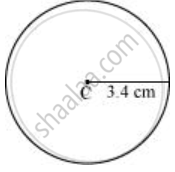
- Now, mark any chord `overline"AB"` in the circle.
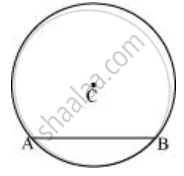
- Taking A and B as centres, draw arcs on both sides of `overline"AB"`. Let these intersect each other at D and E.
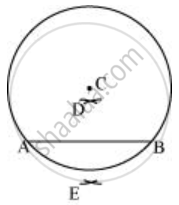
-
Join DE, which is the perpendicular bisector of AB.
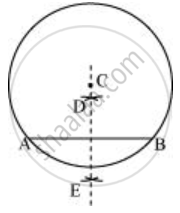
When `overline"DE"` is extended, it will pass through point C.
APPEARS IN
संबंधित प्रश्न
Draw a line segment of given length and construct a perpendicular bisector to line segment using scale and compass
8 cm
Draw a line segment of given length and construct a perpendicular bisector to line segment using scale and compass
7 cm
Only one perpendicular bisector can be drawn to a given line segment.
Infinitely many perpendiculars can be drawn to a given ray.
In figure, the point C is the image of point A in line l and line segment BC intersects the line l at P.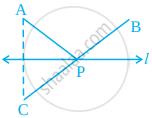
(a) Is the image of P in line l the point P itself?
(b) Is PA = PC?
(c) Is PA + PB = PC + PB?
(d) Is P that point on line l from which the sum of the distances of points A and B is minimum?
Draw an angle of 140° with the help of a protractor and bisect it using ruler and compasses.
Copy figure on your notebook and draw a perpendicular from P to line m using (i) set squares (ii) protractor (iii) ruler and compass. How many such perpendicular are you able to draw?
Bisect a straight angle, using ruler and compasses. Measure each part.
Draw a line segment of length 12.8 cm. Using compasses, divide it into four equal parts. Verify by actual measurement.
Draw any angle with vertex O. Take a point A on one of its arms and B on another such that OA = OB. Draw the perpendicular bisectors of `overline"OA"` and `overline"OB"`. Let them meet at P. Is PA = PB ?
